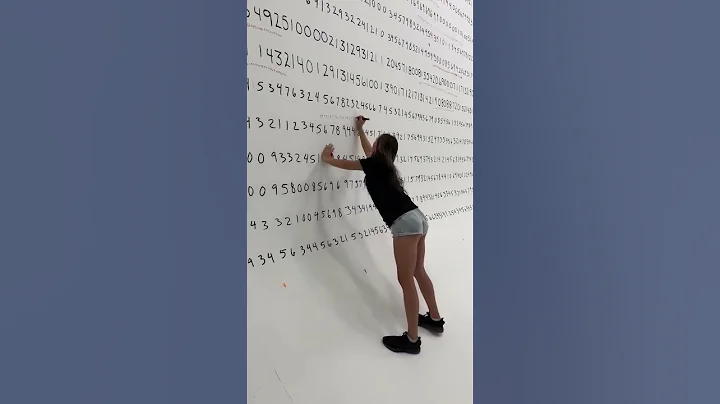has a complete collection of formulas for fourth grade primary school mathematics volume 2. Children can use them proficiently and don’t have to worry about the final exam!
(The circle card has been added here, please go to the Toutiao client to view)
Four arithmetic operations:
1. In the calculation without brackets, if there is only addition and subtraction, it must be calculated in order from left to right.
2. In calculations without brackets, if there are only multiplication and division, they must be calculated in order from left to right.
3. In arithmetic expressions without parentheses, there are multiplication, division, addition, and subtraction. Multiplication and division must be calculated first, and then addition and subtraction.
4. If there are parentheses in the calculation, calculate what is inside the parentheses first, and then perform the calculation in the order of "first multiplication and division, then addition and subtraction".
5. Addition, subtraction, multiplication, and division are collectively called the four arithmetic operations.
6. Add 0 to a number to get the original number.
7. Subtract 0 from a number to get the original number.
8. When a number is multiplied by 0, we still get 0.
9.0 divided by a non-0 number, we still get 0.

The law of addition and multiplication:
1. Two addends exchange places, and the sum remains unchanged. This is called the commutative law of addition. . The letters represent: a + b =b + a
2. Add the first two numbers first, or add the last two numbers first, and the sum remains unchanged. This is called the associative law of addition.
is represented by letters: (a + b) + c = a + (b + c)
3. When two factors exchange positions, the product remains unchanged. This is called the commutative law of multiplication. The letters represent a × b = b × a
4. Multiply the first two numbers first, or multiply the last two numbers first, and the product remains unchanged. This is called the associative law of multiplication.
is represented by letters (a × b) × c = a × (b × c)
5. When the sum of two numbers is multiplied by a number, you can first multiply them by the number and then add them together. This is called
The distributive law of multiplication. Expressed in letters: (a + b) × c =a × c + b × C
The meaning and properties of decimals:
1. Divide 1 meter into 10 equal parts, each part is (1 decimeter), which is (1/10 ) meters, that is (0.1 meters).
2. Divide 1 meter evenly into 100 parts. Each part is (1 cm), which is (1/100) meter, which is (0.01 meter).
3. Divide 1 meter evenly into 1000 parts. Each part is (1 mm), which is (1/1000) meter, which is (0.001 meter).
4. Fractions whose denominators are 10, 100, 1000... can be expressed as decimals.
5. The counting units of decimals are: (tenth), (one hundredth), (thousandth)... written as 0.1, 0.01, 0.001...
6. Between each two adjacent counting units The progress rate is (10).
7. Properties of decimals: Add “0” or remove “0” from the end of the decimal, and the size of the decimal remains unchanged.
8. Comparison of decimals: Compare the integer part first. The number with a larger integer part is larger; if the integer part is the same, compare the tenth place. And so on.
9. The movement pattern of decimal points: a four-line song.
Remember to move the decimal point, right move to expand, left move to shrink, move by one digit is 10 times, move by two digits is 100 times, move by three digits is 100 times... There are not enough digits to fill in.
10. Use the "rounding" method to find the approximate number of a decimal :
When finding the approximate number, keep the integer, which means it is accurate to the single digit; keep one decimal place, which means it is accurate to the tenth place; keep two decimal places, which means it is accurate to the hundredth place Bits...
Remember: when finding an approximate number, look at the highest digit of the mantissa to be retained, and then use the "rounding" method to decide whether to "advance" or "truncate".
Note: When expressing approximate numbers, the 0 at the end of the decimal cannot be removed.
For the convenience of reading and writing, numbers that are not a whole thousand or a whole billion are often rewritten as numbers using "ten thousand" or "hundred million" as the unit.
triangle:
1. A figure surrounded by three line segments (the endpoints of every two adjacent line segments are connected) is called a triangle.
2. Draw a perpendicular line from one vertex of a triangle to its opposite side. The line segment between the vertex and the vertical foot is called the height of the triangle. This opposite side is called the base of the triangle.
3. Triangles have stability.
4. According to angle classification, it can be divided into: acute triangle, right triangle, obtuse triangle;
5. A triangle with two equal sides is called an isosceles triangle, the two equal sides are called waists; the other side is called base; the two angles above the base are called base angles, and the angle between the two waists is called the vertex angle.
6. A triangle with three equal sides is called an equilateral triangle, also called an equilateral triangle.
7. The sum of the interior angles of a triangle is 180 degrees.
decimal addition and subtraction mixed operations:
1. Addition and subtraction of decimals: When
columns are in vertical format, the decimal points must be aligned, that is, the same digits must be aligned;
add or subtract from the low digits. When calculating addition, whichever digit reaches ten will be advanced by one. When calculating subtraction, whichever digit is not enough to subtract is reduced by one from the previous digit and then subtracted as ten. The 0 at the end of the decimal should be removed from the final result.
2. The same laws of arithmetic with integers apply to decimal arithmetic.
line chart : The biggest feature of
bar chart: it can clearly express the quantity. Features of the
line statistical chart: It can not only show the quantity, but also the increase or decrease in the quantity.
Tree planting problem:
Number of segments = full length ÷ segment distance
Plant at both ends: Number of trees = Number of segments + 1 Note : (The number of segments means the number of intervals)
Plant only one end: Number of trees = Number of segments
Plant neither end: Number of trees = Number of segments - 1
Closed graphic tree planting: Tree = Number of segments





















